Featured features on OS X Mountain Lion
TipsMake.com - After 5 months of waiting, finally OS X Mountain Lion was officially released. Intel's Mac OS update has taken great steps when it comes to providing many iOS features and applications to Mac OS. In addition, the operating system adds a lot of new capabilities specifically aimed at computer users. A lot of platform changes such as enhanced security help protect the kernel core at startup and some plugins allow for a better experience, such as automatic scroll bars when used.
Here are 24 new features or improvements to look forward to on the Mountain Lion.
Transcribe sound
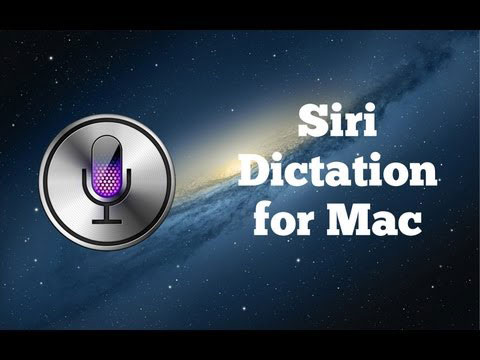
First appeared on a third-generation iPad, this feature came with Macs in OS X Mountain Lion. By using keyboard shortcuts or menu options, users can enter text into any text field or text window with voice and through Apple servers to translate into text. There are 5 supported languages: English, French, German, Japanese and Spanish.
Secure against malware

Last year, Macs witnessed the first serious malware attacks through the Java vulnerability. Apple wants people to think that malware is only a Windows problem, but it is forced to add features to prevent malware for OS X Lion and enhance these features in OS X Mountain Lion with the new Gatekeeper function.
By default, only paid apps from the Mac App Store are installed on OS X Mountain Lion. But users can install intermediate applications with an authentic ID by Apple, regardless of the source from which application. And users can also disable Gatekeeper for only a single installation they trust through an option in the context menu. The idea is that even if malware invades a Mac, they can't install themselves without permission.
Cloud integration
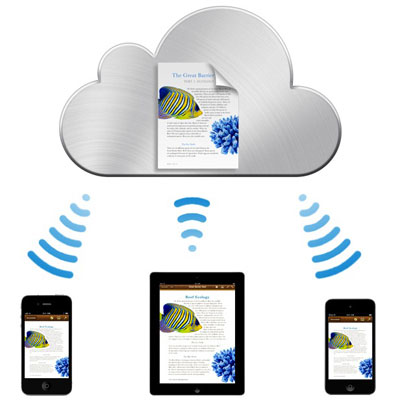
Another inspiration from iOS was brought to Mountain Lion by developers as iCloud cloud application. iCloud allows storing and receiving data directly from iCloud service when accessing Mac or iOS devices. Due to iOS, an application only recognizes its own files, although it is easy to move or copy them between other applications and between the Finder on a Mac, where all applications can identify them (unlike on iOS).
Only applications sold through Mac App Store can use the iCloud Documents API. Preview and TextEdit are among the integrated applications that support iCloud Documents, and Apple's iWork suite has also been upgraded to support this feature.
Customize notifications for applications and Web
Notification Center notification center provides a display frame to list all recent application warnings as well as websites that are activated with Apple notifications and services such as Software Update. Several types of alerts are available to allow users to customize the level of intrusion on the application and disable alerts.
There is also an option to temporarily disable all alerts and OS X Mountain Lion is smart enough to automatically disable alerts when you have an important presentation or play videos on TV via iTunes or AirPlay mirroring feature.
Synchronize browser tabs through the cloud
This feature even appears on OS X before iOS. In Mountain Lion, the iCloud Tabs utility in Safari 6.0 allows users to access recently opened tabs on any Mac as long as they have the same Apple ID. Therefore, users can access unfinished tabs when switching from one computer to another. When iOS is released this fall, its Safari browser will also support tab syncing so iCloud Tabs will work between iOS and OS X.
Safari 6.0 also identifies address and search bars just like Google Chrome, so finding and importing URLs is now consistent across devices. When you enter the address bar and the search bar, the suggested websites will appear below.
Save the Web page
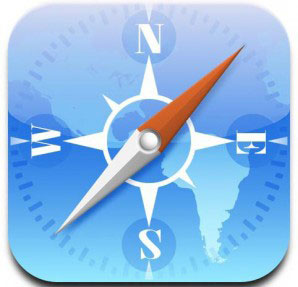
Apple introduced last year's Reading List in Safari, allowing users to save Web pages for later reading. After reading, these pages will disappear from Reading List. On OS X Mountain Lion, Safari now saves HTML files so users can read Web pages saved when not connected to the Internet, such as on an airplane or on a train (iOS will also receive this feature).
The program is also smart enough to save the entire Web page for an article staging multiple pages, not just the currently accessed page when added to Reading List.
Integrated social networking features
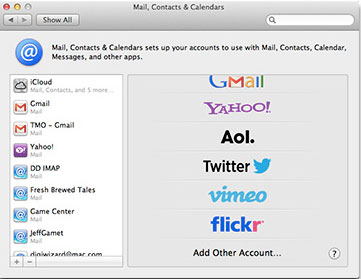
iOS also inspired OS X Mountain Lion for social networking features. The current operating system provides a standard function for sharing content from applications like Safari and QuickTime Pro via Twitter, Facebook, Vimeo, other social networking sites, email, iMessage (a chat service). new) and AirDrop (peer-to-peer file transfer protocol without configuration).
Incorporate with Facebook and Twitter: Both websites update contacts (if users allow them) from friends and followers, and users can also update tweet or status via Notification Center without using an external client.
Intuitive navigation (visual navigation) browser tabs
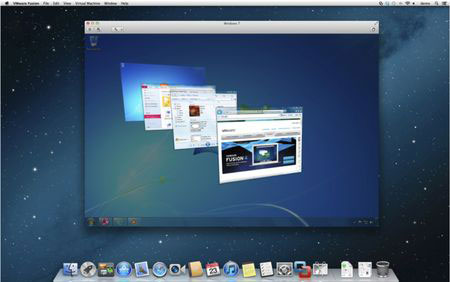
Both WebOS, PlayBook OS and Android 4 have this function and there is no reason for it to not appear on OS X Mountain Lion. Now, OS is provided with intuitive navigation for tabs in the browser. There is a new icon on Safari's tab bar to open a scrollable list of tabs through the tab page or it can be used to move between tabs. There is also a new action that users can perform on inspiring touchpad or mouse to turn on this tab view mode.
Restrict guest account access
Apple has long provided a guest account on OS X that allows users to isolate their files, applications and websites. OS X Mountain Lion offers a second option: Boot Mountain Lion in Safari mode (Safari-only mode) to only use Safari without storing any data when exiting.
You cannot enable both client options, although it is possible to create a normally restricted account for trusted guests and use Safari mode for others.
Rename the file in the title bar (title bar)
Although it is a small change, it is still welcome. Data (documents) from applications installed on OS X Mountain API can be renamed. Users do not have to close the data to correct the data name in the Finder. Just click on the data name in the title bar and enter a new name.
Synchronize the screen with a TV or projector
iOS on iPad allows for screen mirroring and so does OS X Mountain Lion. You can sync the screen to a TV or projector via an Apple TV. Display tuning system allows to adjust the resolution of the playback. By default, the Mac screen is aligned to the TV screen, but you can adjust and adjust the Mac display resolution to match the TV resolution.

You can install OS X Mountain Lion to automatically detect an Apple TV online. In the case of the Displays menu bar icon turns green, it gives you quick access to enable or disable the sync feature.
Automatically sync accounts and rules for mail
Many users hate having to set up Mail rules on multiple Macs. There is no way to export or transfer them so we have to repeat the rules on each Mac and regularly update them all. Everything has change. OS X Mountain Lion automatically syncs Mail Rules and other account settings on all Macs with the same iCloud ID (and Mountain Lion installation). Users will not have to configure anything else that the settings are synchronized immediately. iOS 6 will also support account synchronization with both iOS and Mac devices.
Better control of privacy of personal information
Technology companies often want to collect our personal data without our knowledge. Apple also collects user information through its app store counters, but on both iOS and OS X it gives users more powerful permissions, allowing them to control how their personal information is used. used by web applications or services. Customize the security and security system in OS X Mountain Lion to complement the location security settings in OS X Lion similar to access control for contacts, Twitter and Facebook accounts.
The first time an application or service wants to access these data stores, OS X will display an alert box asking permission from the user. If you agree, but then want to change it, users can still refuse to allow the service or application to not trust the system.
An independent note tool
The iOS Notes app also appears in OS X Mountain Lion. Notes are no longer managed in Mail. The notes are still server-based, so users can take notes and synchronize them via iCloud, IMAP and Ex change with iOS and Mac devices as well as with other server-based software (like Outlook). support notes.
Notes application in OS X Mountain Lion has more features on iOS. For example, you can drag in attachments and drag a note so that it stays on the screen when Notes is closed, like sticky notes.
Reminder to work by location
The iOS Reminders app now also appears in OS X Mountain Lion. iCal (now called Calendar) is no longer used to manage what to do. Now, this job is for Reminders. Notes-like application for synchronizing tasks through compatible servers between compatible applications on all platforms.
But Reminders also offer some special features, such as address-based reminders (for example, warn you to buy milk when you leave the office or pick up both children when you get to school).
More professional scheduling feature
Let's face the fact that iCal has never been as professional as schedules on Outlook or Lotus Notes. ICal version on OS X Mountain called Calendar has added a calendar widget to simplify tasks like scheduling appointments. In addition, the event scheduling features now have additional options such as, the third week's appointment every month.
Simplify the contact manager
Address Book is another OS X application that always makes users feel confused when using. In OS X Mountain, this application (now called Contacts) brings a more pleasant feeling. The interface is simplified with a frame containing contact groups, which is different from the one commonly seen on previous versions.
Contacts are also more integrated with other services. The application receives many security management features and integrates with both Facebook and Twitter as well as with Apple's Messages Messages application.
Cluster management application
Mission Control is one of the features that confuses users for the first time. It allows viewing all windows and open spaces (the set of applications that helps the organization organize a clustered work environment) and navigate between them. It made its debut on OS X Lion and showed its power in the touch interface although it still works well with the mouse.
Screen protector
If you own an Apple TV, you will see beautiful screen savers from Ken Burns, National Geographic and other sources. OS X Mountain Lion brings all these great wallpapers to the Mac. Of course, traditional OS X protection wallpapers are still present.
Compete with friends
iOS 5 introduced an application called Game Center last year, allowing users to track their scores and compare with their friends' achievements through the top table and other game scoring mechanisms. Game Center is also available on OS X Mountain, so you can continue to maintain competition without your iPad, iPhone or iPod Touch.
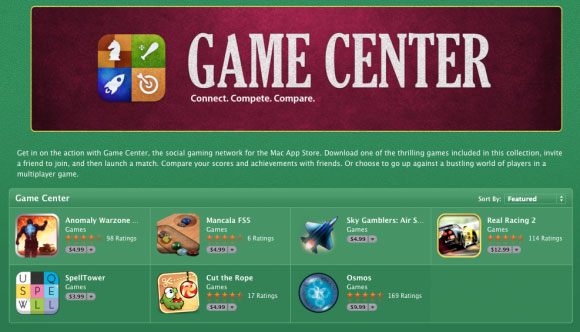
And the classic Chess app on OS X is now compatible with Game Center so you can also play chess with friends.
Quick view of status
This is one of Apple's subtle changes. When users copy or download a file, the file icon has a progress bar that helps them know how the process works.
The progress bar looks more elegant than a floating Copy panel that Apple has been using for a long time on OS X. But, the Copy panel still appears when multiple items are copied, so you can see the whole progress. Present at a time, as well as when a copy operation takes more than 10 seconds. Furthermore, if the Copy panel is obscured, see the progress bar in the Finder window (or vice versa).
Search for messages
Obviously, Mail allows users to check text, name, etc. in mailboxes. But finding the right message is only the first step: Where is the text in the message itself?
OS X Mountain Lion allows users to check in messages via Command + F shortcut separate from Mail's standard Search box to look up mailboxes. In other words, it currently works the same way that Safari handles such internal search queries.
Updated daily and app sync
OS X Mountain Lion focuses on updates in the Updates section of the Mac App Store. When you update the software from the Apple menu, the App Store will open and search the entire update, not just for a separate application like before. That way, all updates are put in one place.
OS X Mountain Lion also now checks the application and updates the system, including daily security patches, not weekly. And users no longer have to select the updated schedule but it will be done daily or manually. OS X can now also be set to install security and system updates without user permission (default).
Automatically set up AirPrint
Apple's AirPrint technology allows wireless and non-configurable iOS devices not to be successful, perhaps because people find they rarely need to print on the go.
But, AirPrint printers are slowly finding their place at home and work. OS X Mountain Lion can now identify these printers when users add a printer in the Prints & Scan option and the operating system will also receive and install the necessary drivers for you. This is AirPrint (AirPrint aware) recognition feature.
 5 little-known features on OS X Mountain Lion
5 little-known features on OS X Mountain Lion The configuration list can install OS X 10.9 Mavericks
The configuration list can install OS X 10.9 Mavericks Install Windows on Mac with Parallels Desktop 9
Install Windows on Mac with Parallels Desktop 9 Free upgrade guide to OS X Mavericks
Free upgrade guide to OS X Mavericks Basic tutorial using multi-point trackpad on OS X
Basic tutorial using multi-point trackpad on OS X Simple ways to speed up your Mac
Simple ways to speed up your Mac